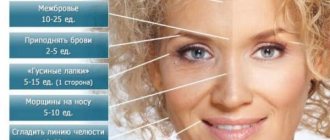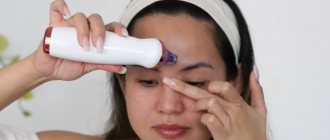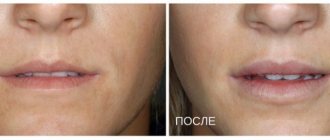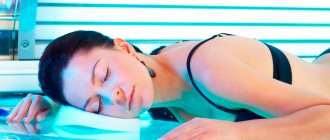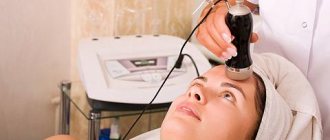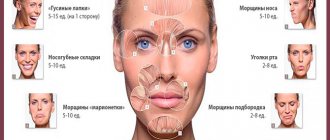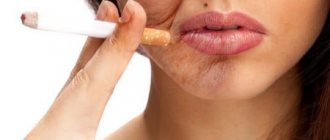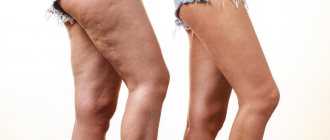Injection contouring is one of the most popular and sought after procedures in modern aesthetic medicine. This method is especially often used to correct the shape of the lips. For this purpose, specialists use various fillers, most often based on hyaluronic acid.
Fillers give the patient the opportunity to give the patient plump, bright and attractive lips. However, sometimes situations arise when it is necessary to remove hyaluronic acid from the lips as soon as possible. Today estet-portal.com talks about why such a problem may arise and which method most effectively helps solve it.
Hyaluronidase will help remove hyaluronic acid from lips
How to remove hyaluronic acid from lips is one of the most common questions that patients who are dissatisfied with the result of lip correction ask specialists.
The fact is that girls today, most often, want to perform correction of this particular part of the face, and the result is not always exactly what both the patient and even the specialist expect.
In this case, it is necessary to correct the situation as soon as possible, because ugly lips significantly spoil a person’s appearance. Today, the enzyme hyaluronidase is used for these purposes, and you will learn the details of this procedure right now.
Remove hyaluronic acid from lips:
- in what cases is it necessary to remove hyaluronic acid from the lips;
- how the enzyme hyaluronidase helps remove hyaluronic acid;
- In what cases is it not recommended to use the enzyme hyaluronidase?
How to remove fillers from your face?
We came to discuss this topic because more and more often our new visitors come to us for the first time precisely for this purpose. On the one hand, every cloud has a silver lining. We are always happy to have guests. Moreover, they then become our friends. On the other hand, it is not customary to interfere with other people’s complications with advice and hands - you will be guilty. But today we will not describe complications, scare someone and promote ourselves on other people’s sorrows. If you experience a complication of injection contouring, you should definitely contact the specialist who administered the drug. We will discuss the question - what to do if you want to get rid of filler. I just decided and I want it.
There may be several reasons for wanting to get rid of filler. Sometimes this is the belief that a person looked better before the injection of filler. (These lips don’t suit me. I looked like a hamster when I removed the nasolabial folds. These cheeks make my face look thicker.) Does this happen? Happens. Sometimes a patient comes in and we don’t see any defects in the filler injection, but he doesn’t want to wear his filler in his face.
The second group who want to get rid of fillers are those for whom filler causes inconvenience. Swelling under the eyes, drooping corners of the mouth, the appearance of bumps at the injection sites, biting the place where the filler is, etc. On the one hand, this is not a complication requiring treatment. More often this is the result of the unprofessionalism of the cosmetologist, but sometimes also the individual reaction of the body. And then it also sounds - remove it!
The third group consists of those in whom the injected filler represents an unaesthetic element of appearance. We all know lips like a duck, cheeks like a balcony, etc. Complication? No. Patient's whim? Sometimes. This must be removed in order to save the patient’s image and… the reputation of the cosmetologist.
So, if this is not an acute complication that requires treatment and threatens the patient’s health, but the voice of common sense, we agree to help and remove the filler. Everyone is lucky if it is a hyaluronic acid filler, i.e. absorbable filler. Then we will need 1-2 sessions to eliminate the drug. To do this, special enzymes are introduced into the area where the filler is located using a microneedle, which immediately begins to convert your hyaluronic acid into water. The body removes this water within a few hours. The very next day, if necessary, we introduce a new filler into this area. This happens when you want to replace crooked lips with smooth ones without losing volume.
A more complex situation arises when a non-absorbable filler, for example Biopolymero, is introduced. Previously, such fillers were administered to almost everyone who applied for contouring. Later, when hyaluronic acid fillers appeared, permanent fillers were no longer used, but even today there are patients who have been injected with such drugs under the guise of hyaluronic acid. Sometimes the filler is 10-20 years old. In this situation, we cannot destroy the drug. We know how to reduce the volume of this zone. The prognosis depends on the location and amount of filler.
So, to summarize the above, then:
- If you are not satisfied with the way your filler looks, it is easy to remove;
- You can remove filler in “Correct Cosmetology” in a few minutes. It is not expensive;
- if desired, a new drug can be introduced in this place tomorrow;
- We will not cause you unpleasant emotions by discussing someone's incompetence. We are collegial!
Sometimes the need to wear unsightly filler forever leaves the fear of its re-injection forever. Believe me, the situation is not tragic. We can remove it today!
In what cases is it necessary to remove hyaluronic acid from the lips?
There are several main reasons or situations that force the patient to consult a specialist to remove hyaluronic acid from the lips: hypercorrection of the lips, migration of the drug or inflammatory processes. Among the reasons for such conditions, first of all, the inexperience of the doctor who injected the filler based on hyaluronic acid, as a result of which mistakes were made and the lips after the procedure do not look aesthetically pleasing.
Sometimes the cause may be incorrect selection of the drug or non-compliance with pre- and post-procedure recommendations by the patient. It also happens that all the conditions for high-quality execution of the procedure are met, but the patient’s body gives an individual reaction to the drug, which also provokes complications.
That is why it is quite difficult to always guarantee an excellent result of lip contouring, and even in the practice of the most experienced specialist, situations may sometimes arise when it is necessary to remove hyaluronic acid from the lips.
Does the patient need rehabilitation after removal of hyaluronic acid?
THEM. No special rehabilitation is needed. The patient will experience nothing but slight swelling after the procedure, unless of course it is recombinant Hyaluronidase. The swelling goes away on its own within a few hours.
As a rule, immediately after the procedure, the doctor performs a massage on the patient so that hyaluronic acid and hyaluronidase find each other as much as possible.
After the procedure, we can recommend that the patient perform tissue massage at home.
How the enzyme hyaluronidase helps remove hyaluronic acid
The specific enzyme hyaluronidase helps quickly and effectively remove hyaluronic acid from the lips. It is this substance that is produced in our body as a natural regulator of the balance of our own hyaluronic acid in tissues. To eliminate the negative consequences of lip contouring, testicular hyaluronidase is used, which is obtained from the testes of cattle.
By injection or using phonophoresis, the enzyme hyaluronidase dissolved in physiological solution is injected into the lips in the required amount, and the result is assessed just 48 hours after the procedure. Lip contouring with fillers can be repeated no earlier than 3 weeks after the injection of hyaluronidase into the lips.
How to get rid of excess filler using hyaluronidase. Watch the video, Svetlana #1
In this article we will talk about one very specific clinical case and an illustration of this case will be one of my friends - Svetlana. We've known each other for about a year, we go to fitness classes together, and as a cosmetologist, I couldn't help but notice some hypercorrection in the area of the nasolacrimal groove. Now I’ll explain what it is. The nasolacrimal groove, a natural anatomical formation, is a groove running from the inner corner of the eye obliquely down to the cheek.
Due to individual anatomical features of the structure and/or with age, this groove may become deeper; there is almost no subcutaneous fatty tissue in this area, and what is there is prone to resorption with age; The orbicularis oculi muscle at the inner corner of the eye has a purple tint and can be seen through thin skin.
These nuances, coupled with the obstructed venous and lymphatic drainage in this area, can form so-called dark circles under the eyes and aggravate the severity of the nasolacrimal groove.
One of the methods for correcting these problems is filling the nasolacrimal groove with hyaluronic filler. Technically, everything is very logical - the furrow is filled, the soft tissues and skin in the furrow area are lifted, the transition from the lower eyelid to the cheek is smoothed - this area becomes smoother, and dark circles become less pronounced, since the light begins to fall into this area evenly, without creating a shadow in the area of the furrow.
But this zone is nevertheless very difficult, and if you introduce a little more filler than necessary, if you use a denser filler than necessary, and/or introduce it at the wrong level, you can get swelling, overcorrection (excessive injection and there will be an elevation in the place of the groove) and the Tyndall effect is when a completely transparent filler, when injected superficially under the skin, shines through in a gray-blue color.
This is all I observed with my friend. Moreover, swelling could appear spontaneously, without any provocation in the form of a large amount of water drunk at night, alcohol, salty food, etc. I found out that this has been bothering her for some time; The doctor who injected her with filler now lives in another country and has no way to improve the situation, so we decided to act on our own.
How the procedure went - watch the video
It was necessary to dissolve the filler that was introduced earlier and after some time, introduce the filler again, in a smaller quantity and deeply, exactly on the periosteum. To eliminate the filler, hyaluronidase was used, an enzyme preparation that can dissolve hyaluronic acid, that is, break its long polysaccharide molecule into short fragments and completely remove them from the body. The result after the introduction of hyaluronidase is usually visible the next day.
In addition to administering hyaluronidase at the same appointment, we were scheduled to evaluate the result of a botulinum toxin (Botox) injection performed a month earlier. The result partially satisfied me - the area between the eyebrows was well captured, there was no facial expression in this area and, as a result, there were no wrinkles. But the forehead retained some mobility, more so on the right side.
Based on this, a correction was carried out, that is, I injected a few more units of Botox into the forehead. Now we just have to wait for the result and schedule an appointment in another week or two in order to assess whether the filler is sufficiently dissolved in the nasolacrimal groove area and to see the condition of the forehead after the Botox injection.
Subscribe to my Instagram, where I immediately publish all the most interesting things
Share
In what cases is it not recommended to use the enzyme hyaluronidase?
In some cases, it is not recommended to use hyaluronidase to remove hyaluronic acid from the lips. Contraindications include:
- individual intolerance to the drug;
- the presence of recent hemorrhages in the correction area;
- oncological pathologies of the body;
- acute inflammatory and infectious processes;
- chronic diseases in the acute phase;
- pregnancy and lactation.
One should also take into account the fact that there is a fairly high risk of developing hypersensitivity to hyaluronidase, which is why the procedure can be repeated only after a preliminary allergy test.
Estet-portal.com thanks you for your attention. Leave your feedback, questions and suggestions in the comments to this article.
Share:
Effective procedures to help remove hyaluronic filler from lips
Unsatisfactory results after lip contouring is a situation that estheticians often encounter in their practice. The main defects that can arise as a result of incorrect procedure are overcorrection, lip asymmetry, migration of the product, distorting the proportions of the face, as well as contouring of the product.
To correct the lips, hyaluronic acid fillers are used, which remain in the tissues for 6 to 12 months, depending on how dense the product is.
However, if the patient receives an unsatisfactory result after the lip correction procedure, there is no need to wait until the drug is removed from the tissues. Find out how to remove lip filler using effective aesthetic procedures right now.
Remove lip filler:
- injections of the enzyme hyaluronidase will help remove filler from the lips;
- contraindications to the use of hyaluronidase for the breakdown of hyaluronic acid;
- remove filler from lips without hyaluronidase injections: alternative options.
Expert opinion
Cosmetologists who have performed more than one operation, unfortunately, agree that overcorrection with contouring is a consequence of the doctor’s inexperience. But you shouldn’t drag a young specialist through the courts over this. After all, in medicine it’s the same as in the kitchen. All the nuances are learned with experience. Moreover, even the most advanced specialists sometimes encounter this problem. And this is due to the anatomical features of the human body. Doctors say that complications after the injection of fillers most often occur in those people who have very thin skin.
Most popular: How to remove subcutaneous fat from cheeks and make your face thin
Moreover, tastes also play a role. In the practice of doctors, there were patients who wanted to achieve maximum effect and the cosmetologist injected a large amount of gel. But for some reason those around me perceived this as overcorrection and inexperience of the doctor. Therefore, a cosmetologist must know all the nuances of human skin. And not only to know. Intuition also plays a big role in the art of contouring. Since being guided by a textbook can sometimes lead to unpleasant complications for the patient.
But, if it was not possible to avoid overcorrection, experts recommend self-massage. But do it as the cosmetologist shows. The introduction of hyaluronidase, or its analogue, longidase, will also help to avoid such troubles. But for more severe cases, experts recommend surgery.
Who is to blame if hypercorrection appears?
Most of the blame lies with the doctor. This may be due to inexperience. When injecting the drug under the skin, he may not calculate the required dose. And in this area, compaction may occur, which will subsequently lead to undesirable results. Complications can arise either as a result of too much injection or as a result of insufficient injection. With overcorrection of the nasolacrimal groove, even swelling may occur.
Most popular: Seven ways to look younger after 40
Therefore, some drugs have dosed packaging (basically a syringe with the required volume of filler), or the instructions indicate how much gel is needed to correct certain areas of the skin. There are also cases when hyaluronic acid is introduced superficially and after the cosmetologist tried to smooth it out, and the gel took it and provoked hypercorrection.
In this case, fillers need to be selected in such a way that they smooth out on their own. Even experienced specialists can make this kind of mistake. But, unlike a beginner, an experienced doctor can determine the amount of injected gel (if the hypercorrection was done by another doctor). This is also noticeable when the same amount of gel is introduced into different places. For example, swelling is more visible on the lips than on other areas of the skin.
What to do if there is a complication
Many patients, after experiencing all the “delights” of complications after the injection of fillers, begin to refuse such operations. For example, nodules and lumps can be a real disaster for models and movie stars. The doctor did not calculate the volume of filler, and because of this, complications arose.
But there is no need to panic. Professional massage therapists recommend massages that help restore the tone of connective tissues. But the most effective remedy for combating growths and nodules is hyaluronidase. This enzyme breaks down hyaluronic acid, thereby correcting complications after surgery.
But this approach is effective if symptoms appear immediately after surgery. Then you can introduce the required amount of the substance and the excess amount of gel will simply dissolve. But there are cases when complications occur several years later, and this also happens with plastic surgery.
It is important to remember that the breakdown of excess hyaluronic acid can be carried out both in the early and late stages. But if at the same time a small amount of gel migration occurs under the skin. But if such symptoms appear after a year or more, these are most likely hormonal problems. And the patient is prescribed either hormonal treatment or surgery.
Contraindications to the use of hyaluronidase for the breakdown of hyaluronic acid
Hyaluronidase injections are a very effective procedure that can be used to remove filler and eliminate the unwanted consequences of lip contouring. However, there are certain contraindications to the use of hyaluronidase preparations, which every aesthetic medicine specialist must be aware of. These include:
- intolerance to the components of the drug;
- tendency to allergic reactions;
- presence of hematomas in the correction area;
- inflammatory and infectious processes in the lip area;
- autoimmune connective tissue diseases;
- period of pregnancy and lactation;
- malignant neoplasms of any location.
In all these cases, using hyaluronidase to remove filler from the lips is not recommended, and the specialist must choose another method for correcting unsatisfactory results of lip contouring.
